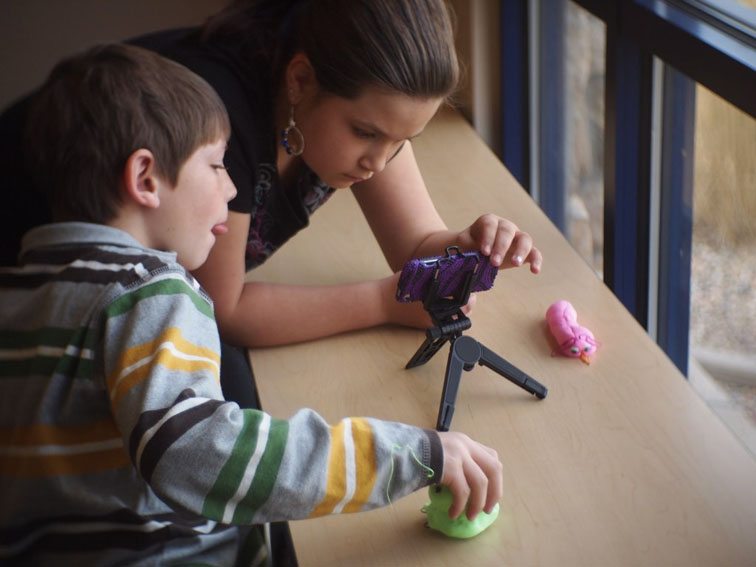 How Good Teachers Decenter Themselves
How Good Teachers Decenter Themselves
by Grant Wiggins, Ed.D, Authentic Education
As teachers we understandably believe that it is the ‘teaching’ that causes learning.
But this is too egocentric a formulation. As I said in my previous post, the learner’s attempts to learn causes all learning. The teaching is a stimulus; the attempted learning (or lack of it) is the response. No matter what the teacher says or does, the learner has to engage with and process the ‘teaching’ if learning is to happen.
From this viewpoint, the teacher is merely one resource for learning, no different from a book, a peer, an experience, or an experimental result. It is the learner who decides to try to learn (or not) from what happens. And the learner will only wish to learn and be able to learn if the conditions of learning have been optimized to make sustained engagement and understanding possible.
Put in terms of a phrase that many now use, in and out of education, such a viewpoint reflects design thinking. We think like a designer, not like a teacher, when we say: the teacher is just one element in the design. The choice of task, pedagogy, groupings, flow of work, resources, furniture, light, noise level, role of people and text – all of these design elements are arguably as important as the teacher.
I know this sounds a bit unromantic. It must sound dry to all of us–me included–who entered teaching to ‘lay on hands’ in the phrase used by health-care workers and religious leaders. But genuine improvement in student learning depends upon such decentering, just as we had to give up the geocentric theory to advance our success in understanding the universe.
The learning is the center of our world, not the teaching. And until we see that we are in the business of designing and causing learning instead of merely in the business of teaching, we will fail to cause optimal learning. We will fail to reach beyond the already-motivated, bright, and dutiful learners who trust adults and delay gratification very well.
 What All Good Designs Have In Common
What All Good Designs Have In Common
I often refer to Eric Mazur’s Peer Instruction model at Harvard in Physics, Socratic Seminar, a 4th grade reading block with choice reading and varied tasks, Varsity Soccer, and video games to underscore the importance of such a de-personalized view of our real job. In all these cases, there is less teaching yet more learning than in traditional teacher-centric classes.
How? Because great care has been given to thinking through the goal of the learning and the conditions that have to be in place if optimal engagement and active self-directed learning, in a group of diverse students, is to occur. What are those conditions, in a nutshell? I would highlight the following:
- Thought-provoking intellectual challenges (inquiries, questions, problems)
- The challenge has been designed to optimize self-sustaining and productive work by learners, related to a clear and intellectually worthy goal
- The learners have become reasonably competent in classroom routines that foster productive goal-focused work
- The challenge cannot be accomplished by a worksheet, checklist or recipe. It requires strategic use of knowledge and skill, creative problem-solving, and critical thinking; and the eliciting of multiple perspectives on how to address the challenge and gauge progress.
- There is an unambiguous product or performance goal (even if there is ambiguity about how to achieve the goal), supported by clear criteria and standards, thus permitting ongoing student self-assessment and self-adjustment.
- There is enough feedback within the challenge (and resources) that the work can be maximally self-sustaining and productive.
- The teacher is therefore freed up to coach for a significant amount of time, permitting personalized feedback and guidance (as well as just-in-time mini-lessons). This coaching role also permits the teacher to determine what is and isn’t working in the challenge, and thus enables the teacher to quickly change gears if the desired learning is not occurring or the process is not working.
The key ideas here are self-sustaining, challenging and productive work, where learners themselves become and feel more competent in transferring their learning with ever-increasing autonomy.
In other words, it is a poor design for learning that puts all the burden of teaching and processing on the teacher. Then, the teacher can neither coach nor understand what is going on in the minds of learners. Worse, endless teaching, no matter how expert, soon becomes passive and without much meaning to learners who must wait days, sometimes weeks, to get meaningful chances to interact with the content, to try out their ideas on others, and to get the feedback they need.
7 Characteristics Of Group-Worthy Tasks
I should note that some of my thinking about this issue was prompted by reading an article by Rachel Lotan in Educational Leadership on “group worthy” learning tasks from 2003, via a fine book on group work in mathematics written by Ilana Horn. Here is my slightly-edited version of the Lotan-Horn criteria for group worthy work:
- Focus on central concepts or big ideas that require active meaning-making
- The challenge itself has ambiguity or limited scaffold and prompting so that student meaning-making and different inferences about the task and how to address it will emerge.
- Are best accomplished by ensuring that multiple perspectives are found tried out in addressing the task. This not only rewards creative and non-formulaic thought but undercuts the likelihood that one strong student can do all the key work.
- Provide multiple ways of being competent in the task work and the task process
- Can only be done well by a group, but are designed to foster both individual and group autonomy. (The teacher’s role as teacher and direction-giver should be minimized to near zero).
- Demand both individual and group accountability
- Have clear evaluation criteria
(Horn also notes and develops the idea I already mentioned above that previously-established group norms and group process protocols need to be in place for optimal learning. In addition to her good suggestions, see our book on Essential Questions for additional ideas about processes and protocols in an inquiry-focused classroom.)
Lotan, Rachel (2003) Educational Leadership 60, 6 pp. 72 – 75
Horn, Ilana Seidel Strength in Numbers: Collaborative Learning in Secondary Mathematics (2012), NCTM
This article first appeared on Grant’s personal blog; follow Grant on twitter; image attribution flickr user woodleywonderworks and flickeringbrad; How Good Teachers Carefully Decenter Themselves

